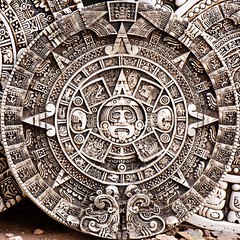| 7478983523 | Law of Tolerance | A species' livelihood is determined by the levels of 1 of more physical or chemical factors falling within the range tolerated by that species | | 0 |
| 7478999057 | Limiting factors | Regulates survival, growth or reproduction | | 1 |
| 7479069033 | Ecology | is a study of connections in nature | | 2 |
| 7479083055 | Organisms | The different forms of life on earth | | 3 |
| 7479087979 | Species | A group of living organism consisting of similar individuals capable of exchanging genes or interbreeding | | 4 |
| 7479104282 | Population | is a group of interacting individual of the same species occupying a specific area | | 5 |
| 7479113471 | Communities | populations of different species living and interacting in a given area | | 6 |
| 7479122236 | Ecosystem | A community of different species interacting with one another and with their non-living environment of matter and energy | | 7 |
| 7479132174 | Abiotic | non-living components | | 8 |
| 7479134401 | Biotic | living components | | 9 |
| 7479142880 | Atmosphere | Troposphere and stratosphere | | 10 |
| 7479144475 | Hydrosphere | all Earth's water | | 11 |
| 7479145928 | Geosphere | Earth itself | | 12 |
| 7479148222 | Biosphere | where the living things are | | 13 |
| 7479153919 | Lithosphere | Crust and mantle | | 14 |
| 7479155542 | Crust | thin silicate zone, a few miles thick | | 15 |
| 7479159231 | Mantle | Largest zone, high in iron, silicon, oxygen and magnesium | | 16 |
| 7479164000 | Core | Innermost zone, mostly iron. Solid inner surrounded by molten material | | 17 |
| 7556736387 | Trophic level | represents its place in the food chain | | 18 |
| 7556776036 | Photosynthesis | Solar radiation is captured by chlorophyll and other pigments
Carbon dioxide + water + solar energy in glucose and oxygen
6CO2 = 6H2O + solar energy -> C6H12O6 +6O2 | | 19 |
| 7556810712 | Aerobic Respiration | organic molecules are
used for an energy source
glucose and oxygen breaks down into carbon
dioxide, water and energy
C6H12O6 + 6O2 → 6CO2 + 6H2O + energy | | 20 |
| 7556835592 | Primary Consumers | (Herbivores) feed directly on producers | | 21 |
| 7556839488 | Secondary Consumers | (Carnivores) Feed on primary consumers | | 22 |
| 7556845099 | Tertiary Consumers | Feed on carnivores and omnivores | | 23 |
| 7556915471 | Biomass | Dry weight of all organic matter contained in organisms. Usable energy is transferred as biomass | | 24 |
| 7556943445 | Biomass pyramid | Show the biomass available at every level and can look like an energy pyramid | | 25 |
| 7556951310 | Terrestrial Biomass Pyramid | |  | 26 |
| 7556955429 | Aquatic Biomass Pyramid | |  | 27 |
| 7608266229 | Food web | Shows a more complex flow of energy in a
system. Energy flows linearly in direction of
arrow. | | 28 |
| 7608274420 | Energy Pyramid | As energy flows through trophic levels there is
a conversion of usable energy to heat (2nd law
of thermodynamics) | | 29 |
| 7608287872 | Ecological Efficiency | describes the efficiency with which energy is transferred from one trophic level to the next. | | 30 |
| 7608305775 | Gross Primary productivity | The rate at which an ecosystem's
producers convert solar energy into
chemical energy as biomass | | 31 |
| 7608305776 | Net Primary Productivity (NNP) | rate at which energy for use by consumers is stored in new biomass (plant growth) | | 32 |
| 7694799384 | Natural Selection | A natural process resulting in the evolution of organisms best adapted to the environment. Is not the growing of adaptation but rather the organisms are not eaten pass their genes on to the next generation. | | 33 |
| 7694846047 | Mutations | a random error in gene replication that leads to a change | | 34 |
| 7694971438 | Coevolution | Process by which two species evolve in response to changes in each other | | 35 |
| 7695035710 | hybridization | occurs when individuals to two distinct species crossbreed to produce an fertile offspring. | | 36 |
| 7744019833 | stratosphere | 12 to 50 km, Ozone held here, absorbs UV radiation | | 37 |
| 7744032778 | troposphere | the lowest layer of Earth's atmosphere, where weather occurs | | 38 |
| 7744106532 | Sulfur cycle | |  | 39 |
| 7744111272 | Nitrogen Cycle | |  | 40 |
| 7744116016 | Phosphorous cycle | |  | 41 |
| 7744121677 | Water cycle | |  | 42 |
| 7744127868 | Carbon cycle | |  | 43 |
| 7770716852 | Artificial selection | is the intentional reproduction of individuals in a population that have desirable traits. | | 44 |
| 7770728419 | Selective Breeding | is the process by which humans use animal breeding and plant breeding to selectively develop particular phenotypic traits (characteristics) by choosing which typically animal or plant males and females will sexually reproduce and have offspring together. | | 45 |
| 7770746077 | Speciation | A new species can arise when member of a population becomes isolated for a long period of time. | | 46 |
| 7770766106 | Geographic Isolation | Isolation between populations due to physical barriers | | 47 |
| 7893728067 | Plankton | Important group of weakly swimming free-floating biota | | 48 |
| 7893767691 | Necton | Fish, turtles and whales | | 49 |
| 7893776207 | Benthos | Bottom dwellers | | 50 |
| 7893782068 | Decomposers | breakdown organic compounds (mostly bacteria) | | 51 |
| 7893792726 | Euphotic Zone | (upper layer in deep water
habitats): sunlight can penetrate. | | 52 |
| 7893806148 | Coastal Zone | is the interface between the land and water. | | 53 |
| 7893816324 | bathypelagic zone | below the ocean surface. It lies between the mesopelagic above and the abyssopelagic below. | | 54 |
| 7893873090 | mesopelagic zone | is that part of the pelagic zone that extends from a depth of 200 to 1000 metres (~660 to 3300 feet) below the ocean surface. | | 55 |
| 7893883492 | abyssopelagic zone | this zone remains in perpetual darkness and never receives daylight. | | 56 |
| 7905063748 | Intertidal Zone | area of shoreline between low and
high tides. | | 57 |
| 7905079750 | Standing (lentic) water | such as lakes, ponds, and inland wetlands. | | 58 |
| 7905086098 | Flowing (lotic) systems | such as streams and rivers. | | 59 |
| 7905118396 | Littoral Zone | (Near shore, Shallow, with rooted plants) | | 60 |
| 7905139070 | Limnetic zone | (open, offshore area, sunlit) | | 61 |
| 7905141287 | Profundal zone | (deep, open water, too dark for photosynthesis) | | 62 |
| 7905200630 | Benthic zone | (bottom of lake, nourished by dead matter) | | 63 |
| 7929819336 | Oligotrophic | (poorly nourished) lake: Usually newly
formed lake with small supply of plant nutrient input. | | 64 |
| 7929819337 | Eutrophic | (well nourished) lake: Over time, sediment,
organic material, and inorganic nutrients wash into
lakes causing excessive plant growth. | | 65 |
| 7929824356 | Cultural eutrophication | Human inputs of nutrients from the atmosphere and urban and agricultural areas can accelerate the eutrophication process. | | 66 |
| 7929829997 | Species diversity | the number of different species it
contains (species richness) combined with the
abundance of individuals within each of those species (species evenness). | | 67 |
| 7929831270 | Species richness | The number of different species in a community | | 68 |
| 7929832785 | Species evenness | relative abundance of each species | | 69 |
| 7929834093 | Niche structure | how many potential
ecological niches occur, how they resemble or
differ, and how the species occupying
different niches interact. | | 70 |
| 7929836828 | Geographic location | species diversity is
highest in the tropics and declines as we move
from the equator toward the poles. | | 71 |
| 7929839490 | Indicator species | Species that serve as early warnings of damage to
a community or an ecosystem. | | 72 |
| 7929839491 | Keystone species | A species that influences the survival of many other species in an ecosystem | | 73 |
| 7929845448 | Resource Partitioning | The differentiation of niches that enables similar species to coexist in a community | | 74 |
| 7929848036 | Niche specialization | Niches become separated to avoid competition for resources | | 75 |
| 7929850915 | Carbon sink | A feature of the biosphere that removes and stores large amounts of atmospheric carbon | | 76 |
| 7929855917 | Ecological succession | the gradual change in
species composition of a given area | | 77 |
| 7929856562 | Primary succession | the gradual establishment of
biotic communities in lifeless areas where there is no soil or sediment. | | 78 |
| 7929859137 | Secondary succession | series of communities develop
in places containing soil or sediment. | | 79 |













































